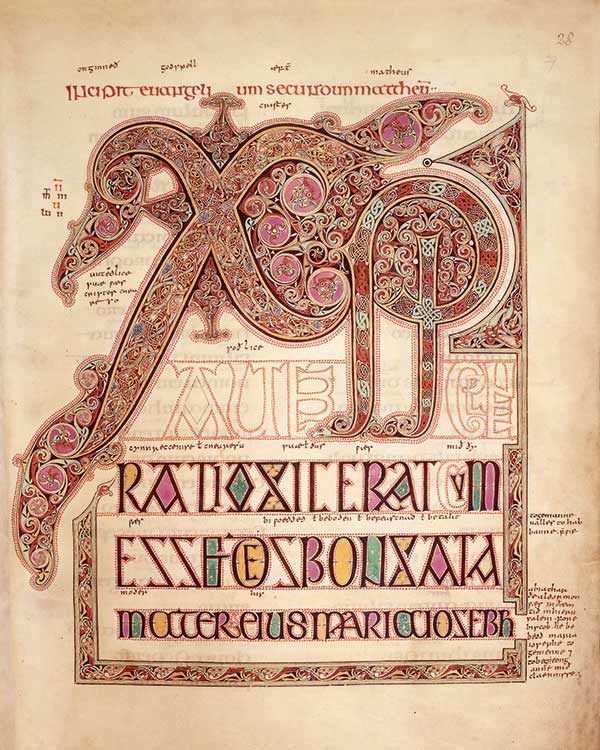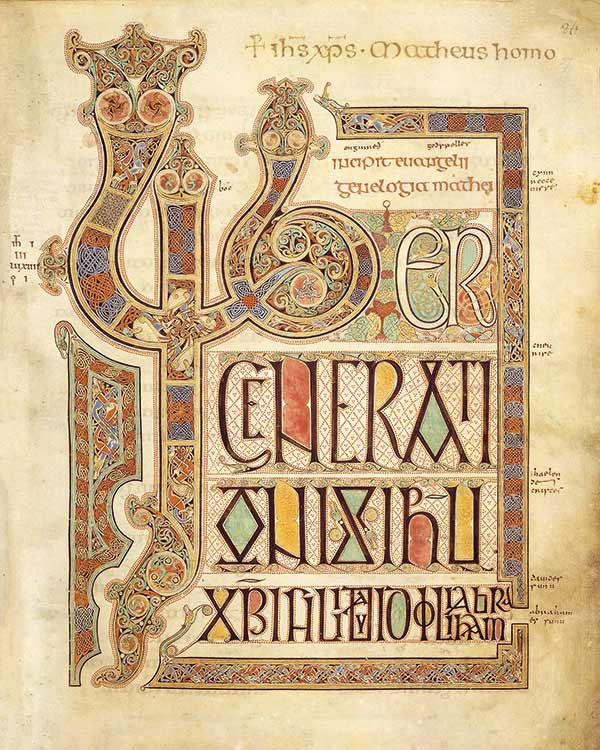Subtotal: $
Checkout-

The Name of My Forty-Sixth-Great-Grandfather
-

Somewhere in Chessington
-

Singing the Law
-

Desiring Silence
-

Uncle Albert
-

Soldier of Peace
-

Two Crônicas
-

Poem: “The Revenant”
-

Poem: “L’esthétique de la Ville”
-

Poem: “When You Pursue Me, World”
-

Gazapillo
-

Editors’ Picks: God Loves the Autistic Mind
-

Editors’ Picks: Damnation Spring
-

Editors’ Picks: Life between the Tides
-

The Faces of Our Sons
-

Remembering Tom Cornell
-

Letters from Readers
-

Monica of Thagaste, Mother of Augustine
-

Covering the Cover: Generations
-

A Legacy of Survival
-

Daughter of Forgottonia
-

Giving Your Children Your Words
-

Book Tour: On Being a Good Ancestor
-

Ten Theses on Intergenerational Stewardship
-

Inheriting Mental Illness
-

Yearning for Roots
-

Fear of a Human Planet
-

Reviving the Village
-

Is There a Right to Have Children?
-

The Stranger in My House
-

The Sins of the Fathers
-

My Father Left Me Paperclip

Decoding the Bible’s Begats
We moderns tend to think genealogy shouldn’t matter. Scripture disagrees.
By Alastair Roberts
December 23, 2022
Next Article:
Explore Other Articles:
Every few years, dozens of members of my wife’s extended clan descend upon a small cabin next to a lake near Mystic, Connecticut for a reunion. Newcomers to the family are initiated into its culture, a sediment of peculiar traditions and customs that have accumulated for the better part of a century. As it was the first reunion since I married into the family, Susannah and I had to perform a ceremonial leap into the lake from the pier. I was given a tour of the trees on the property that memorialize deceased members of its former generations. She also sewed a leaf-shaped piece of fabric representing me onto the larger hanging of the family tree.
Susannah and I belong to Gen Four of the extended family tree; the family has now attained to its fifth generation. The members of this most recent generation – and the news of expected additions – represent the promise of continuation and the family’s shared life into the future. As Neil Postman once observed, “Children are the living messages we send to a time we will not see.”
Participating in such an event, I was recalled to the importance of the ways that the meaning of our lives transcends their brevity. We are bearers of the legacies, memories, and hopes of those who preceded us, custodians who must hand them on to others, hopefully in a form enriched by our temporary possession. The meaning of our present labors and sacrifices is entrusted in part to descendants we may never even meet, much as we represent a harvest rewarding those of our ancestors.
The New Testament begins in a surprising manner. If one were to ask most people to rank different forms of biblical material according to how interesting they are, one would not be surprised to find genealogies taking up the bottom slots, along with such things as instructions for sacrificial rituals and lists of offerings from the book of Numbers. Yet Matthew chose to open his Gospel with the pyrotechnics of a genealogy. In the prominence he accords it, Matthew recalls the Old Testament book of the Chronicles, which begins with nine chapters of genealogies, upon whose rocks lie the wreckage of many a well-intentioned Bible-reading project! Indeed, Chronicles appears to be one of the sources that Matthew has drawn upon. To the curious contemporary reader, the prominence enjoyed by Matthew’s genealogy invites close attention and reflective consideration.

The Lindisfarne Gospels manuscript, from which the artwork in this article is taken, dates back to ca. ad 700. Historians believe that Eadfrith, a monk at Lindisfarne, an island off the Northumberland coast, was both scribe and artist of the manuscript. The image above, from the Gospel of Matthew, shows the first letters of Christ’s name.
An important and pervasive feature of biblical literature is intertextuality – texts regularly echo, recall, allude to, cite, and otherwise play off each other. As a result, much of their richness cannot be properly appreciated unless we read them in conversation with various others. Matthew’s genealogy is no exception.
A genealogy such as Matthew’s is a way of alluding to and evoking a larger narrative, not unlike the “previously on …” recap before the first episode of a new season of a television series. It situates new events within the arc of a larger narrative, of which they will serve as the culmination. The gospel narrative does not begin in a historical vacuum, but as the climax of a long history of God’s dealings with Abraham and his descendants. Matthew’s catalog recalls familiar names that represent some of the narrative’s most important moments, recollecting earlier events and characters so that the hearer recaptures the threads of the greater story. This, of course, is one of its most important purposes: any who might otherwise be tempted to regard the New Testament as entirely self-contained are immediately charged to understand Matthew’s account against the vast backdrop of the Old Testament.
To many readers, Matthew’s opening “the book of the genealogy …” (Βίβλος γενέσεως) would immediately have recalled the repeated formula of Genesis, the same words used in the Greek Septuagint. In his purposeful echo of this familiar and prominent expression, Matthew evokes this background: Genesis is the great book of beginnings and the gospel is the account of a new beginning in the middle of history.
As Peter Leithart has recognized, the Gospel of Matthew employs the entire scope of the Old Testament narrative as a template. What better way to communicate the way that Jesus bears, contains, and fulfills the destiny of the people of God than by recounting his ministry in a way that constantly evokes the memory of the older one? With his allusion to the generational formula of Genesis and the character of Abraham, Matthew begins as he means to go on.
The gospel does not begin in a historical vacuum, but as the climax of a long history of God’s dealings with Abraham and his descendants.
The story of Genesis will be even more powerfully evoked: another Joseph bar Jacob is given prophetic dreams and leads his family down into Egypt for safety. Here there is another king killing baby boys, from whom the child appointed to be the future savior of his people is again delivered. However, in a twist on Exodus, the king is in Israel and the refuge in Egypt. Later, Jesus spends forty days in the wilderness being tested, as Israel was tested for forty years.
Such biblical patterns continue to play out in the Gospel, which climaxes in the death and resurrection of Christ, framed to allude to the destruction of the temple and the exile of Judah, followed by the rebuilding of the temple and return from the far country in the resurrection. Fittingly, its final verses – the Great Commission – echo the concluding verses of 2 Chronicles, in some orderings the final book of the Old Testament.
Apart from Jesus Christ, two key figures stand out in Matthew’s genealogy: Abraham, with whom it begins, and David, arguably its pivotal figure. Abraham was the father of the Jewish people, called from Ur of the Chaldees, who received the promise that his descendants would be numerous as the stars of heaven. David was the great king, the founder of the ruling dynasty, the one from whom the promised Messiah was to arise. Jesus is introduced to us in the first verse of the Gospel as “the son of David, the son of Abraham.” These titles are far from incidental: he is introduced to us as the bearer of the great burden of expectation and destiny.
The genealogy itself contains forty-two generations, ordered into three movements: “So all the generations from Abraham to David were fourteen generations, and from David to the deportation to Babylon fourteen generations, and from the deportation to Babylon to the Christ fourteen generations” (Matt. 1:17). The genealogy is not comprehensive: it omits three wicked kings between Joram and Uzziah. The 14-14-14 pattern is likely an intentional literary design, inviting comparisons with the cycles of the moon, as James Bejon has argued: there is a period of waxing from Abraham to David, followed by a period of waning from David to the exile, and another period of waxing as Israel is raised up from its exile, culminating in the arrival of the Messiah.
The number fourteen, as several commentators have noted, also has a particular association with David, the climax of the first group: it’s the gematrial value of his name in Hebrew. The second fourteen ends with the collapse of the Davidic dynasty in the descent into exile. The final fourteen ends with the advent of the Davidic Messiah, framing the story of David’s throne and Jesus as David’s true heir.

While Matthew’s genealogy generally proceeds from father to son, prior to the introduction of Mary four women break up this pattern: Tamar (verse 3), Rahab (verse 5), Ruth (verse 5), and Bathsheba (“the wife of Uriah” in verse 6). Were we to pick out notable women from Jesus’ line, these probably would not be the first to come to mind! The great matriarchs – Sarah, Rebekah, and Leah – are nowhere mentioned, yet women with more complicated histories are. Tamar, likely a Canaanite woman, became the mother of Judah’s children through an act of deception, dressing as a prostitute in Genesis 38. Rahab, the Canaanite prostitute who harbored the spies in Joshua 2 and was delivered from the fall of Jericho, is nowhere else mentioned in association with Salmon, yet here we are told that she married the son of the prince of the tribe of Judah (1 Chron. 2:10–11). Ruth was a Moabite widow who married Boaz, a descendant of Lot’s incestuous relations with his daughter (Gen. 19:37). Bathsheba was the wife of the Gentile Uriah, wickedly taken by David, who then engineered the death of her husband.
By mentioning these four women, Matthew primes his hearers for narrative themes that frame both the birth of Jesus and the wider character of his work. The first thing they highlight is the inclusion of Gentiles among the people of God: each of them was a Gentile or, in Bathsheba’s case, formerly married to one. If the ancestry of the Messiah includes all these Gentile women, is it not fitting that many Gentiles should be within his bride, the church?
Their stories also describe times where the covenant was in jeopardy, stories of courageous faith, of forgiveness, of life from the dead. In Genesis 38, for instance, we witness the house of Judah descend into death: Two of Judah’s sons die, his wife dies, and Judah refuses to give Tamar to his youngest son, Shelah, to continue his line. Only through Tamar’s cunning deception does the chapter end with the birth of two sons and, even then, the line of one of them is condemned to frustration. The resourceful Rahab bravely hid the two men who spied out Jericho and was rescued from a condemned city. The loyal Ruth raised up life to a dead man’s line and gave her mother-in-law, who had abandoned hope, having lost her husband and two sons to famine, a son in her old age. Bathsheba and David lost their first child through the Lord’s judgment: the birth of Solomon was a sign of forgiveness and of life from the dead. Through these women Matthew alludes to a long history of the Lord’s bringing in the foreigner, forgiving and restoring his people, and raising up David’s line from the clutches of death, as well as the daring faith and love of weak and victimized outsiders who trusted in this salvation. In the resurrection of Jesus, God will raise up David’s Seed once more.
We might also consider how these women become mothers in surprising or irregular ways – as with the culminating story of Mary, things are not necessarily as they first appear.
Matthew’s recounting of Christ’s genealogy is a reminder that the hope of David’s line never lay in its own vigor but in the power and promise of the God who can open a virgin’s womb and a sealed tomb. Joseph, described in verse 20 as “son of David” himself, will become father to the Messiah, but not from his own strength.
Jesus took upon himself the troubled history of David’s line, with all its sins, frustrated hopes, and tragedies, and lived out its destiny restoratively, to fulfill the promises to Abraham, that his line would bring blessing to the nations.
Moderns have become dulled to our own place in the generations, to the ways that we receive, bear, and pass on legacies, to the ways we are the harvest of former generations’ labors and how our own labors await the harvest of future generations. In Matthew’s genealogy, Jesus is introduced to us through the patterns of a long succession of earlier generations, as the fulfillment of their hopes, and their redemption from tragedy, frustration, and death.
Much of scripture traces God’s gradual work of deliverance and restoration over many generations of a people. It reveals the legacies of past sins, but also the remarkable ways that his salvation can restore and reverse them. Implied in the promise to Abraham that all the families of the earth would be blessed (Gen. 12:3) may be not only the hope that all peoples might come under the beneficent rule of Israel’s Messiah, but that the overcoming of tragedy and the gift of fulfillment exemplified in David’s line, accomplished by the Son of Abraham, might be worked out in our family lines too.
Already a subscriber? Sign in
Try 3 months of unlimited access. Start your FREE TRIAL today. Cancel anytime.











































